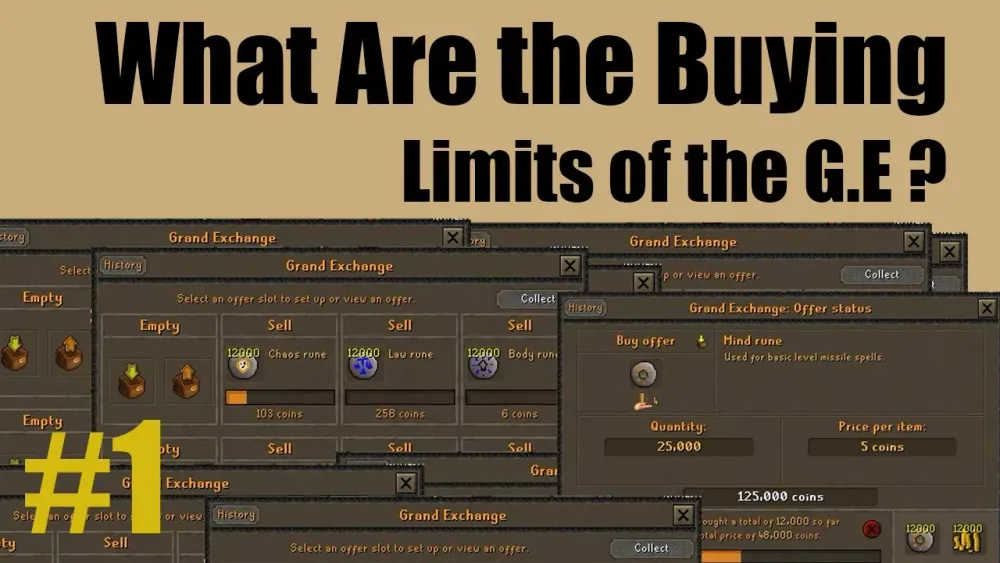Your cart is empty
OSRS General Store Prices Understanding the Mechanics and Strategies

In Old School RuneScape (OSRS), general stores serve as versatile hubs where players can buy and sell a wide range of tradeable items. Unlike specialty shops that focus on specific categories like weapons or runes, general stores accept nearly any tradeable item, making them a go-to for offloading miscellaneous loot or snagging bargains. However, their pricing mechanics can be confusing, especially for new players or Ironmen who rely on stores for early-game income. This blog post dives deep into how OSRS general store prices work, offering strategies to maximize profits and avoid common pitfalls. Whether you’re a skiller, quester, or just looking to make quick gold, understanding general store dynamics can give you an edge.
General stores are scattered across Gielinor, identifiable by a pot icon on the map. They’re found in major hubs like Lumbridge, Varrock, and Falador, as well as remote locations like Shantay Pass or the Wilderness Bandit Camp. These stores are run by shopkeepers and assistants who buy and sell items, offering a unique economic niche in OSRS. Unlike the Grand Exchange (GE), which relies on player-driven supply and demand, general store prices follow fixed algorithms based on item value and stock levels.
Key Features of General Stores
- Accept All Tradeable Items: You can sell almost any tradeable item, from logs to dragon bones, though rare items like Santa hats are excluded.
- Basic Inventory: Stores stock common items like pots, jugs, buckets, shears, and hammers, which restock quickly.
- Player-Sold Stock: Items sold by players appear in the store’s inventory, creating opportunities for bargains or overstocked goods.
- Location-Specific Perks: Some stores, like the Bandit Duty Free in the Wilderness, offer higher buy prices, making them ideal for Ironmen.
How General Store Prices Work
The pricing system in general stores is tied to an item’s base value, which is typically the price at which specialty shops sell it. When you sell or buy items, prices fluctuate based on the store’s stock, creating a dynamic market that rewards strategic timing. Let’s break down the mechanics for both selling and buying.
Selling Items to General Stores
When you sell an item to a general store, the initial price is the low alchemy value, which is 40% of the item’s base value (or two-thirds of its high alchemy value). For example, a tiara with a base value of 100 coins has a low alchemy value of 40 coins, so the first tiara you sell fetches 40 coins. However, the price decreases as the store’s stock of that item increases.
- Price Decay: Each additional item sold reduces the price by 3% of the base value. For the tiara, each sale after the first lowers the price by 3 coins (3% of 100).
- Minimum Price: The lowest price you’ll receive is 10% of the base value, or 25% of the low alchemy price. For the tiara, this is 10 coins, reached after selling 10 tiaras.
- Special Stores: Certain stores pay more. The Bandit Duty Free and Rogues’ Den stores buy at high alchemy value (60% of base value), while West Ardougne, Pollnivneach, and Legends’ Guild stores pay 55% of base value.
Buying Items from General Stores
When buying items from a general store, the price starts high and decreases as stock accumulates. The initial price is 127% of the item’s base value when the store has one item in stock. For example, a bucket with a base value of 30 coins might cost 38 coins at low stock. As more buckets are sold to the store, the price drops, reaching a minimum of 30% of the base value (9 coins for a bucket) at 34 items in stock.
| Stock Level | Price (% of Base Value) | Example (Bucket, Base Value 30 Coins) |
|---|---|---|
| 1 | 127% | 38 coins |
| 10 | 97% | 29 coins |
| 34+ | 30% | 9 coins |
This system rewards players who find understocked stores or buy player-sold items at a discount compared to GE prices.
Strategies for Maximizing General Store Profits
General stores can be a goldmine if used wisely, especially for Ironmen or players in areas with limited GE access. Here are proven strategies to get the most out of general stores.
World Hopping for Better Sell Prices
Since sell prices drop with overstock, hopping worlds to find stores with low or no stock of your item ensures you get the maximum price (low alchemy value or higher in special stores). For example, selling willow longbows (base value 320 coins, low alchemy 128 coins) in bulk is tedious because the price drops to 32 coins after 10 sales. Hopping worlds after selling 5–10 longbows keeps the price closer to 128 coins.
Targeting High-Value Stores
Stores like the Bandit Duty Free in the Wilderness or Martin Thwait’s Lost and Found in Rogues’ Den buy items at high alchemy value, offering 150% of the standard general store price. For instance, selling a rune scimitar (base value 15,000 coins) yields 9,000 coins in these stores versus 6,000 coins elsewhere. Note that the Wilderness store carries risks due to PKers, so travel light and use caution.
Flipping GE Items to Stores
Some items can be bought on the GE for less than their general store sell price, especially in high-value stores. For example, if you buy an item on the GE for 500 coins and sell it to the Bandit Duty Free for 600 Coins, you’ve made a profit. This method requires research, as GE prices fluctuate, but sites like GE Tracker can help identify opportunities. Be cautious, as past incidents (e.g., Grotesque Souls in 2016) led to bans when players exploited unintended store prices, though Jagex’s response was controversial.
Common Items and Their General Store Prices
Understanding the price ranges for common items can help you decide what to sell or buy. Below is a table of typical items and their general store sell prices, assuming no stock and standard stores (low alchemy value).
| Item | Base Value (Coins) | Low Alchemy Sell Price (Coins) | Minimum Sell Price (Coins) |
|---|---|---|---|
| Bucket | 30 | 12 | 3 |
| Willow Longbow | 320 | 128 | 32 |
| Tiara | 100 | 40 | 10 |
| Rune Scimitar | 15,000 | 6,000 | 1,500 |
For high-value stores like Bandit Duty Free, multiply the low alchemy price by 1.5 (e.g., rune scimitar sells for 9,000 coins).
Pitfalls to Avoid When Using General Stores
While general stores offer opportunities, there are traps to watch out for, especially for players new to their mechanics.
Overstocking and Price Drops
Selling too many items to one store without hopping worlds tanks the price. For example, selling 200 willow longbows in one go could drop the price to 32 coins each, costing you thousands in potential profit. Limit sales to 5–10 items per world to maintain higher prices.
Ignoring GE Alternatives
For non-Ironmen, the GE often offers better prices for high-demand items like ores or logs. Check GE prices before selling to stores, as you might lose money by dumping items at low alchemy value. Use tools like GE Tracker to compare.
Risks in the Wilderness
The Bandit Duty Free store is tempting due to its high buy prices, but its Wilderness location makes you a target for PKers. Only bring what you’re willing to lose, and consider using a low-risk world or banking frequently.
Conclusion
OSRS general stores are a powerful tool for managing inventory and earning gold, especially for Ironmen or players in remote areas. By understanding the pricing mechanics—low alchemy for selling, stock-based pricing for buying—and using strategies like world hopping or targeting high-value stores, you can turn miscellaneous items into consistent profits. Always weigh the GE as an alternative for non-Ironmen, and stay cautious in risky areas like the Wilderness. With these tips, you’ll be navigating general stores like a pro, making your Gielinor adventures more profitable and efficient.

